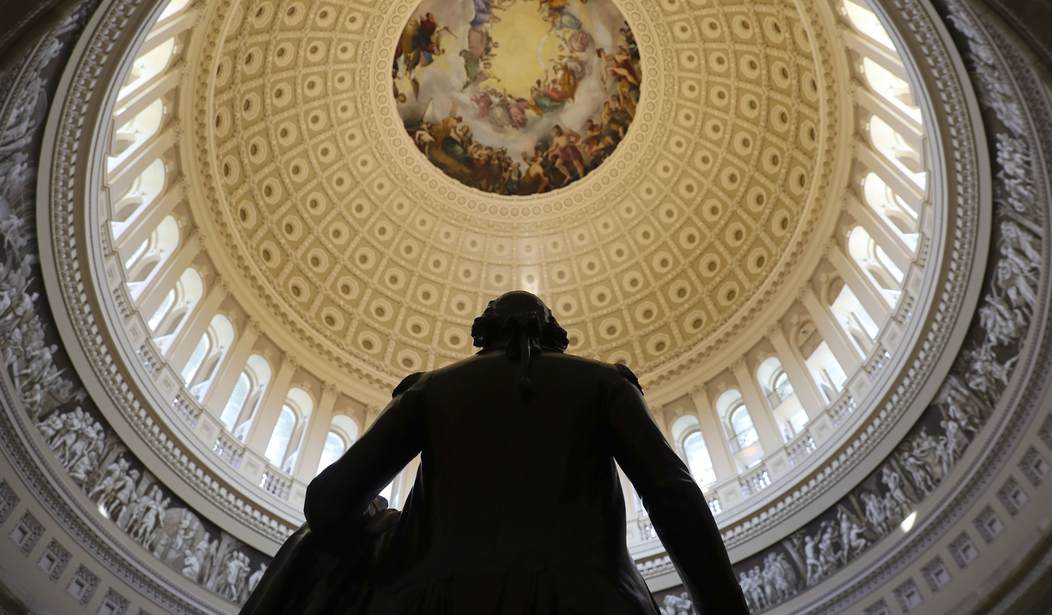America seems rife with historical illiteracy these days, so I’ve decided to do a weekly column teaching some of the history that our citizens really need to learn. In this first installment, I’ll set the stage for the Western heritage and the American experiment, explaining why this history is important and why — in order to understand America — you have to start with an understanding of how poor most human beings have been.
Thanks to Marxist critical theory, leftists are attempting to twist American history into a story of oppression. The New York Times‘ 1619 Project insists that America’s true founding came with the arrival of the first black slaves in 1619 rather than with the Declaration of Independence in 1776. The narrative that America is fundamentally racist and oppressive seems to be driving the deadly and destructive George Floyd riots across the country, particularly in Portland. No less a celebrity than Oprah Winfrey has adopted this vision.
Recently, Sen. Tim Kaine (D-Va.), Hillary Clinton’s running-mate in 2016, claimed that America invented slavery. Earlier this week, presumptive Democratic nominee Joe Biden insisted that President Donald Trump is the first racist president in American history. Both of these statements reveal gobsmacking historical illiteracy.
In reality, America has been an incredible force for liberty, ingenuity, and prosperity. While the United States tragically harbored a heinous race-based slavery for hundreds of years, this sin does not define America. The country’s ideals, expressed in the Declaration of Independence and applied in the Constitution, do define us. While our country has not always measured up, it has achieved remarkable progress toward “liberty and justice for all.”
How we think about history
It is easy to see history as a series of names and dates — Thomas Jefferson and the Declaration of Independence, 1776; George Washington and the first presidency, 1789; Magna Carta, 1215; and so on, and so on. Most people are bored by this mere rote recitation. History needs a compelling narrative to make it come alive, and it needs to be relevant so it does not leave people thinking, “Okay, so what?”
At the risk of sounding triumphalist, I aim to set out a vision of history that explains how modern Americans got our ideas, our institutions, and the free-market system that has enabled prosperity on a level unimaginable to our remote ancestors. I do not believe that America is the pinnacle of history or that history only matters for explaining modern America, but I do think this vision is both interesting and relevant for modern Americans.
I majored in History at Hillsdale College, focusing on intellectual history in the West. I studied from ancient Sumeria to the Civil War, from ancient Israel to the Progressive movement. I do not aim to dive into everything that I learned, but I plan to offer a brief summary to interest and engage readers.
The basic perspective
So, where to begin? It is difficult for modern Americans to wrap our heads around just how prosperous and free we are today and just how impoverished and oppressed our remote ancestors were.
Last December, I came across an interesting graphic aimed at shocking Americans about wealth inequality. I took the exact opposite message. The graphic noted that if 100 people lived on earth, 14 of them would not be able to read, 10 would not have clean water, and 50 would have no internet access.
I was astonished. An 86 percent literacy rate is absolutely incredible. Only fourteen percent of the people in the world cannot read and write?! That’s amazing. For most of human history, literacy was limited to the cream of the crop, the top 1 percent, if that. Similarly, 90 percent of the people in the world have access to clean water now. Yes, we should want the last 10 percent to get access to it — but think about how monumental an achievement that is! For millennia, humans drank water mixed with alcoholic beverages in part because they could not trust the water.
This video shows just how prosperous the world really is. An 86 percent literacy rate and a nearly 90 percent clean water rate are extremely high in terms of human history. Don’t let the zero-sum wealth comparison distract from the tremendous progress. https://t.co/1FaVM1WBiS
— Tyler O'Neil (@Tyler2ONeil) December 10, 2019
Just this month, Morgan Housel posted a graphic on Twitter showing how Americans spent their money in 1869, in 1940, and in 2013.
In 1869, Americans spent a whopping 51.9 percent of their income on perishable goods — 44.3 percent of it on food and alcohol. By 1940, that had dropped to 28.2 percent (22.3 percent on food and alcohol). In 2013, Americans only spent 9.2 percent of their income on perishable goods and a mere 7.6 percent on food and alcohol.
Meanwhile, 1869 Americans spent a mere 24.1 percent of their income on services like rent, eating out, and charitable contributions. In 1940, Americans spent 43.1 percent on services, and by 2013, that increased to 66.5 percent.
In 2013, Americans spent most of their income (58.5 percent) on things that did not even exist in 1869. This includes household utilities and health care, but it also includes cars, travel, recreation services, personal care, communication, education, and more.
Change in what US households spend their money on, 1869-2013. https://t.co/6RYyU29yJa pic.twitter.com/woNepWy4Dj
— Morgan Housel (@morganhousel) July 15, 2020
Bernie Sanders loves to lecture us about how much money Americans spend on health care, but the real surprise is how little money we spend on the basic necessities of life. For most of human history, it has been hard to keep a family alive — subsistence, not wealth, has generally been the goal for the vast majority of the population.
Now, Americans not only spend far less on food and shelter than our ancestors did, but we have more money to spend on cars, electricity, entertainment, and more. We enjoy conveniences we take for granted, like air conditioning and heating, microwaves and refrigerators, running water, and goods and information easily accessible from across the world.
It is patently absurd to suggest that the modern American who wakes up in an air-conditioned house, microwaves a refridgerated snack for breakfast, drives a car to the office, buys a coffee at Starbucks, buys goods from across the world with the click of a button, and brushes his teeth in the evening is oppressed based on the color of his skin. Even a simple thing like dental hygiene was not understood for thousands of years, and keeping pristine teeth into your 30s would be unheard of in most societies.
Wealth is unequal in American society, but every citizen enjoys the right to vote. In fact, America has taken pains to address the racial inequalities of its past. America values meritocracy, and while it has not created a fully meritocratic system, it is generally true that hard work pays off. In any case, America’s inequality should be weighed in the balance with the incredible prosperity we now enjoy.
How does someone explain such gobsmacking wealth? It’s not enough to assume that human beings just get richer and freer as time goes on — devastating reversals have happened quite suddenly. In the Ancient Near East, a bustling commercial system involving impressive empires and a vast trade network suddenly collapsed in about 1177 B.C. While the Middle Ages are often unfairly characterized as a period marked only by darkness, the fall of Rome did spread chaos across Europe.
My history of America and the West series aims to explain the real cause for our modern freedom and prosperity, and why efforts to demonize America and Christianity like the 1619 Project are not just false, but a threat to the freedom and wealth we enjoy.
Tyler O’Neil is the author of Making Hate Pay: The Corruption of the Southern Poverty Law Center. Follow him on Twitter at @Tyler2ONeil.









